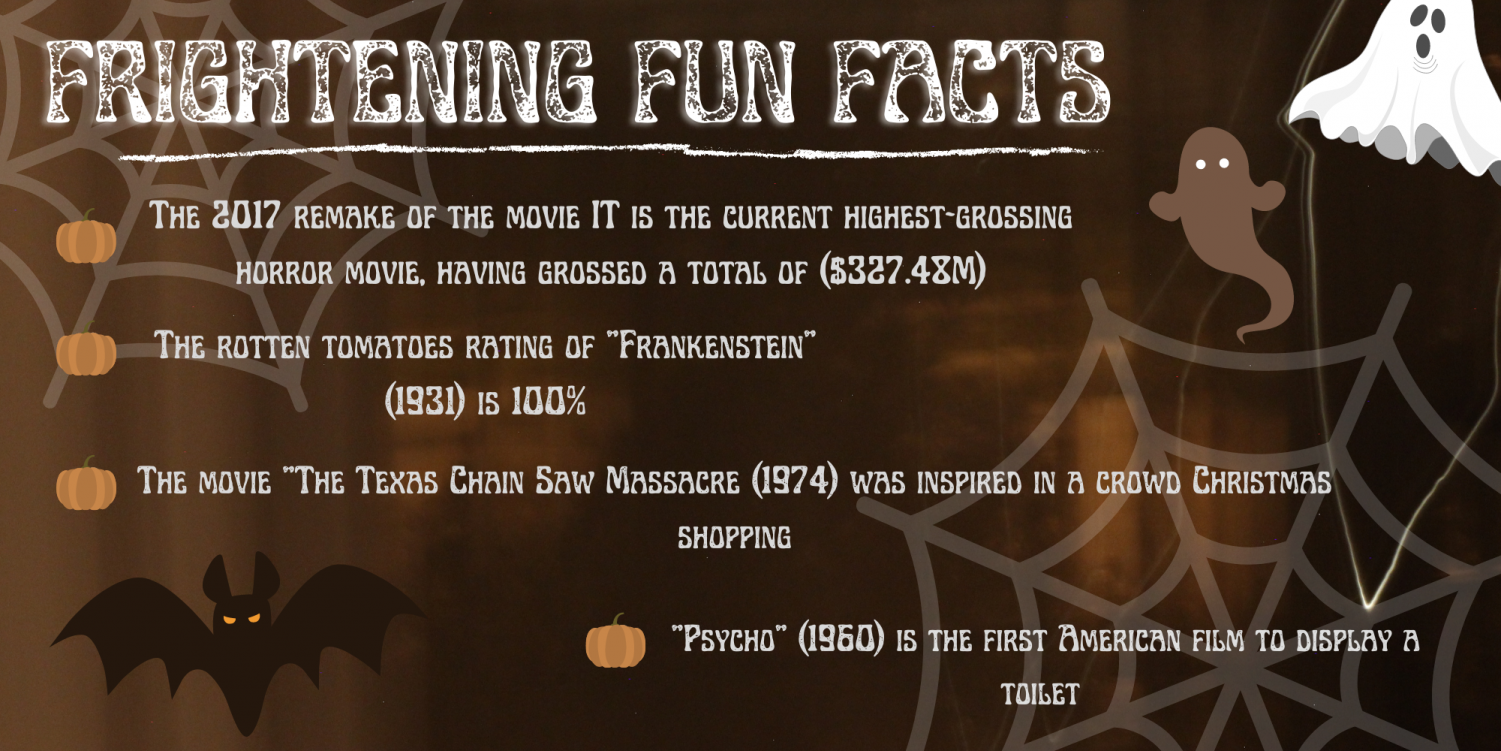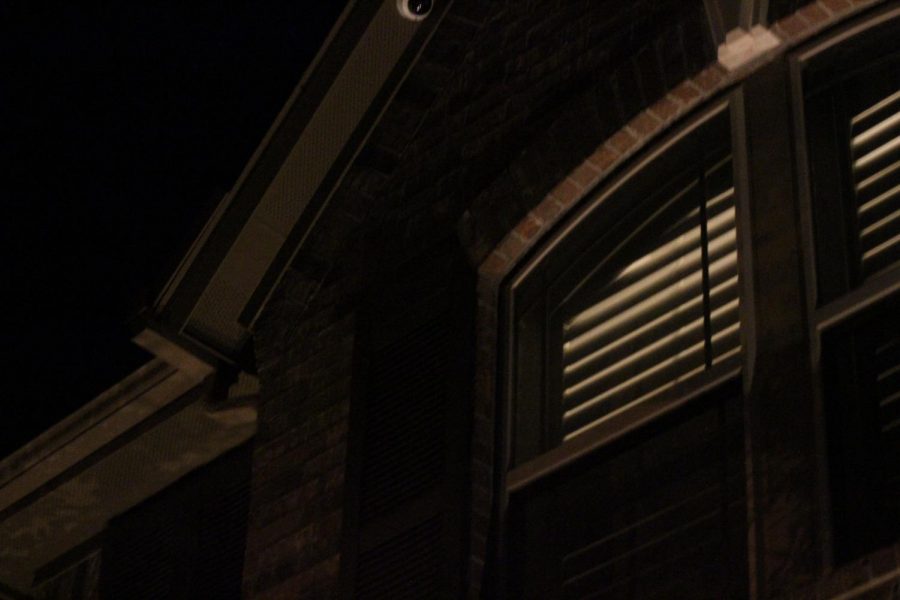Adrenaline Junkies
An analysis of the horror genre.
December 3, 2021
The horror genre has been lurking around for centuries. From art, literature, and scary movies, it is safe to say that the idea of spooky entertainment is not a new trend and has spread far and wide. Even though the name ‘horror’ didn’t come around until the 1900s, people’s want for adrenaline-pumping content stretches far beyond modern time. Today, the most commonly seen form of horror is cinematic, horror movies taking the number one spot for consumption. The realm of horror, especially in movies, has found its way to progress over recent years. This allowed for people to explore their deepest, darkest fears and disgust through the use of horrifying imagery and heart-pounding suspense while safe on the outside.
The Evolution
Literary works of horror extended back into the 1700s. The first ever horror story in a legitimate literary form called “Castle of Otranto” was created by Horace Walpole in 1765. After him, many came to write more horror stories, including famous horror novelists like Edgar Allen Poe (1809-1849), Mary Shelley (1797-1851), and H.P. Lovecraft (1890-1937).
These novelists are only to name a few, for many renowned written works were created during the 1700s to the 1900s. Works of these times include many classics like “Dracula” by Bram Stoker, “Frankenstein” by Mary Shelley, “Dr. Jekyll and Mr. Hyde” by Robert Louis Stevenson, “The Phantom of the Opera” by Gaston Leroux, and “The Picture of Dorian Gray” by Oscar Wilde.
Works of horror are also still written today, an author named Stephen King (1947-present) having written over 90 works, more than 20 having been listed as New York Times best-sellers. While literature has been the longest used form of horror, in the very late 1800s, the industry took a turn.
The earliest recorded ‘horror movie’ was filmed in the 1890s, a surprising feat for the time. “Le Manoir du Diable”, made in 1896, was a three minute long film that is now known by scholars as the first horror movie ever created. It opened the doors to a new world of infinite possibility, leading to what we know as horror today.
From the 1900s onward, the realm of these movies began to expand and soar. What we found over the span of the 1910s to the 1920s were the makings of classic works of frightful literature into movies for people to enjoy. Then, rapidly evolving into the “Golden Age of Horror” in the 1920s to 1930s, the word ‘horror’ was used to describe the growing genre. Some of the works of these times include “The Cabinet of Dr. Caligari” (1920), “Frankenstein” (1931), the first adaptation of “Dr. Jekyll and Mr. Hyde” (1931), and “The Mummy” (1932).
During the next two decades, due to the proximity to World War II and The Cold War, the horror genre saw an influx in movies featuring disasters. These movies largely spawned due to the fear of nuclear war and mutation as well as fear of invasion by other powers. Movies like “Godzilla” (1954), “The Incredible Shrinking Man” (1957), “The War of the Worlds” (1953), and “When Worlds Collide” (1953) took America by storm, fueling an imaginative fire.
From the 1960s onward, America began consuming slasher films and had a hunger for movies in this genre with more gore. An example of a movie from this time is “Night of the Living Dead” (1968) which kickstarted the making of zombie movies in this era.
Everything starts to become blended from here on out. In the 70s and 80s, both occult and slasher films took off and began running the big screens. Movies featuring possessions of people as well as the big horror icons we all know now began to make their way into horror history. There are many classics that were churned out at this time, but some big name movies to consider could be “The Exorcist” (1973), “The Shining” (1980), “The Omen” (1976), “Friday the 13th” (1980), “A Nightmare on Elm Street” (1984), “Halloween” (1987), and “The Texas Chain Saw Massacre” (1974).
From the ‘90s to present day, the new name for the current age of horror is very disputed. There is a little bit of everything now, making it hard to group all of the horror movies into one category. At the moment, remakes are very prevalent, yet many new movies with new premises are coming out. We’re still deciding what to call this new age of horror, yet it still delivers the same adrenaline that was promised from the beginning.

Analyzing the Alarm
Horror movies have been enjoyed far and wide for over a century now, but what is the thing that draws in the crowd and makes horror movies appealing? For one, horror movies are just that. Movies. You sit cozy under the blankets, and even though the evil being on the screen may throw you into a panic, it can’t physically harm you. You’re safe behind your screen, putting yourself in a character’s shoes instead of having to live through it yourself.
Many people enjoy horror movies due to the adrenaline rush. Triggered by your flight or fight response, adrenaline prepares for danger and allows for the quick reflexes needed to deal with it. This experience pulls more people into watching these movies, reading horror novels, or consuming anything that involves terror. That is the draw of these movies, after all.
Another reason people enjoy horror movies is the ability to put themselves in the shoes of the main character and compare their own reactions to what the character is doing in their predicament. This gives people the feeling that they are better fit to survive, and in that way believe horror movies help them prepare for the worst. Some situations may be super far-fetched, but anything to keep yourself safe in the bad situations, right?
Far-fetched ideas also lead to the shutting off of the TV and the abandoning of the big screen due to the lack of realism some of these movies possess. Some people who dislike horror movies claim to do so because the movies they consume are too far-fetched and unrealistic. The unrealism in these movies to these people leads to boredom, causing the TV to go black and the movie to become – and to remain – unfinished.
On a similar note, some horror movies can tend to dip into a similar pattern, leaving people to become victims to a similar scenario over and over again. This pattern was mostly seen in the more popular slasher films of the 70s and 80s, a group of teenagers making repetitive bad decisions or a single person fighting to survive some entity that nobody else believes is real.
Lastly, there can be an issue with the consumers of horror movies. Horror movies often feature horrific situations and images too graphic for younger audiences. This is also often accompanied with explicit language and imagery, making such movies even more unsuitable for a younger demographic. It has become apparent that parents need to be very careful about the content their children are exposed to, especially in horror movies. It has been found that some children experience lasting effects of trauma from prolonged exposure to more gory horror movies. Examples of this could be anxiety, avoidance, nightmares and even a decrease in appetite. Movies like these often earn R ratings, but there are horror movies that appeal to a younger audience. Suggested ‘horror’ movies for these audiences include movies like “Coraline” (2009) and Gremlins (1984), which should still be under viewer discretion for audiences below the age of seven.
So, overall, horror movies intend to create shock and even repulsion in those that view them, the fans of these movies craving the rushes of adrenaline that comes with the initial fright. Horror movies have their ups and downs, and the love or hate of these kinds of movies heavily depends on who the consumer is. From the early works of horror literature to the pictures on the big screens today, the genre has flourished because of the minds of those seeking out the thrill that horror has to offer.
